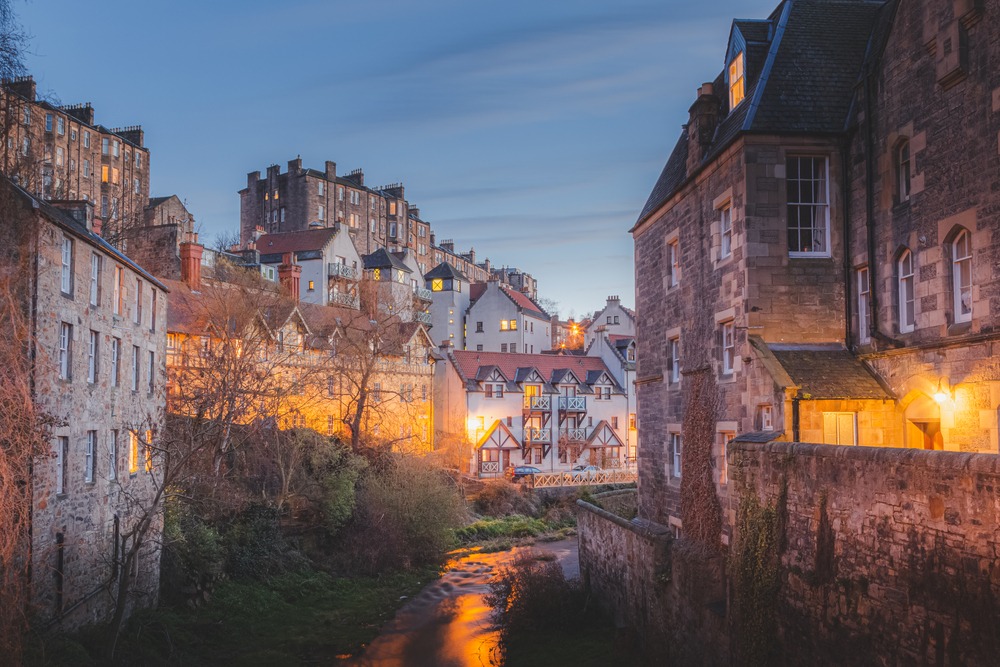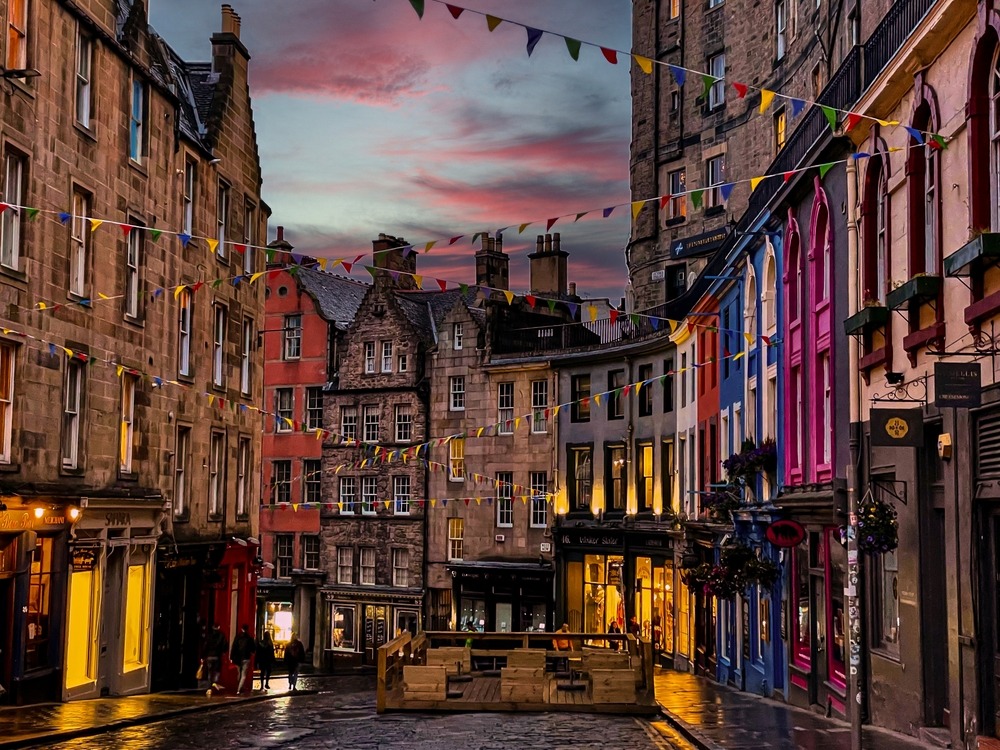History of Edinburgh, Scotland
Edinburgh, the capital of Scotland, is a city steeped in over a thousand years of history. From ancient volcanic rock to royal fortresses and Enlightenment-era thinkers, Edinburgh has been a political, intellectual, and cultural epicenter of Scotland for centuries. Its dramatic skyline, cobblestone streets, and enduring traditions reflect the city’s storied past and dynamic present.
Ancient Origins and Early Settlement
The origins of Edinburgh trace back to a rocky hill—now crowned by Edinburgh Castle—known as Castle Rock, a dormant volcanic plug that provided natural defense. Long before Roman occupation, the Votadini tribe settled this area. The Romans referred to it as “Din Eidyn”, or “fortress on the slope,” giving rise to its current name.
By the 7th century, the Angles had taken control of the territory, and over time, the region became part of the developing medieval Scottish kingdom. The town grew around the castle and gained significance due to its strategic location between England and the Highlands.

Medieval and Royal Edinburgh
In 1329, Edinburgh was declared a royal burgh by King Robert the Bruce, granting it trading privileges that spurred rapid growth. By the 15th century, the city was firmly established as Scotland’s capital, becoming the center of governance and royal affairs.
The Royal Mile—connecting Edinburgh Castle to the Palace of Holyroodhouse—became the heart of civic and royal life. In the 16th century, Edinburgh witnessed significant religious and political upheaval during the Scottish Reformation, led by figures like John Knox, and later became a flashpoint in the Wars of the Three Kingdoms and the Jacobite uprisings.
The Enlightenment and New Town
In the 18th century, Edinburgh emerged as a global center of philosophy, economics, literature, and science during the Scottish Enlightenment. Thinkers like David Hume, Adam Smith, and James Hutton helped transform the city into what became known as “The Athens of the North.”
To accommodate a growing population and an emerging wealthy class, the New Town was constructed in a neoclassical style, offering contrast to the cramped medieval Old Town. Today, both districts are part of a UNESCO World Heritage Site.
Modern Edinburgh
In the 19th and 20th centuries, Edinburgh expanded into a modern capital while preserving its historical core. It has become an international hub for education, the arts, finance, and tourism. The annual Edinburgh Festival Fringe, begun in 1947, is now the world’s largest arts festival, helping to secure the city’s reputation as a global cultural beacon.

Top 25 Attractions in Edinburgh, Scotland
1. Edinburgh Castle
A historic fortress atop Castle Rock offering panoramic views, the Crown Jewels, and centuries of royal and military history.
2. Royal Mile
The spine of the Old Town, lined with shops, pubs, historic closes, museums, and landmarks connecting the Castle to Holyroodhouse.
3. Palace of Holyroodhouse
The official residence of the British monarch in Scotland, open to the public with its gardens, apartments, and abbey ruins.
4. Arthur’s Seat
An extinct volcano offering a moderate hike and the best panoramic views of the city and surrounding countryside.
5. Holyrood Park
A sprawling natural park encompassing Arthur’s Seat, Salisbury Crags, lochs, and ruins, ideal for outdoor exploration.
6. St Giles’ Cathedral
A majestic medieval church with a crown spire and beautiful stained-glass windows, often considered the “Mother Church of Presbyterianism.”
7. National Museum of Scotland
A vast museum covering Scottish history, natural sciences, world cultures, and technology, with hands-on exhibits and stunning architecture.
8. Scottish National Gallery
Houses works by Botticelli, Rembrandt, Turner, and Scottish masters in a neoclassical building on Princes Street.
9. Calton Hill
Famed for its Greek-style monuments, including the National Monument and Nelson Monument, with sweeping city vistas.
10. Princes Street Gardens
Beautiful gardens nestled beneath the Castle, separating the Old Town from the New Town, perfect for relaxing strolls.
11. Camera Obscura and World of Illusions
An interactive museum near the Castle featuring optical illusions, light displays, and panoramic rooftop views.
12. The Scotch Whisky Experience
Take a barrel ride through the whisky-making process and enjoy tastings from one of the world’s largest whisky collections.
13. The Real Mary King’s Close
A guided underground tour of a preserved 17th-century street, revealing eerie tales of plague, poverty, and everyday life.
14. Edinburgh Dungeon
An immersive, theatrical attraction that explores Scotland’s darker history through humor and horror.
15. The Royal Yacht Britannia
Explore the decommissioned royal ship docked in Leith, which served the British royal family for over 40 years.
16. Dean Village
A tranquil, picturesque riverside neighborhood just minutes from the city center with cobbled streets and historic mills.
17. Grassmarket
A lively historic square once used for public executions, now home to pubs, shops, and street performers beneath Castle Rock.
18. Greyfriars Kirkyard
A historic cemetery known for its ghost stories and the loyal dog Greyfriars Bobby, with tombstones inspiring Harry Potter names.
19. Surgeons’ Hall Museums
One of the oldest medical museums in the world, featuring anatomical specimens, surgical tools, and medical history.
20. Scott Monument
A striking Gothic monument to Sir Walter Scott, offering a climbable tower with sweeping views of the city.
21. Victoria Street
Often called one of the most beautiful streets in Edinburgh, with colorful shopfronts and a rumored inspiration for Diagon Alley.
22. The Writers’ Museum
Dedicated to Scotland’s literary greats—Robert Burns, Sir Walter Scott, and Robert Louis Stevenson—located in a historic townhouse.
23. Museum of Edinburgh
Located on the Royal Mile, this museum tells the city’s story through artifacts, models, and interactive exhibits.
24. John Knox House
A surviving medieval structure believed to be the former home of Reformation leader John Knox.
25. Festival Theatre & Edinburgh Playhouse
Catch world-class live performances, from opera and musicals to drama and dance, in these historic venues.
Conclusion
Edinburgh is a city that breathes history and lives culture. Its ancient volcanic hills, towering castles, Enlightenment legacies, and creative energy make it one of the most captivating cities in the world. Whether you’re wandering narrow medieval closes, climbing Arthur’s Seat, sipping whisky, or applauding a Fringe performance, Edinburgh is both a journey through time and an adventure into the arts. It is, quite simply, a place where the past and present thrive side by side.

































